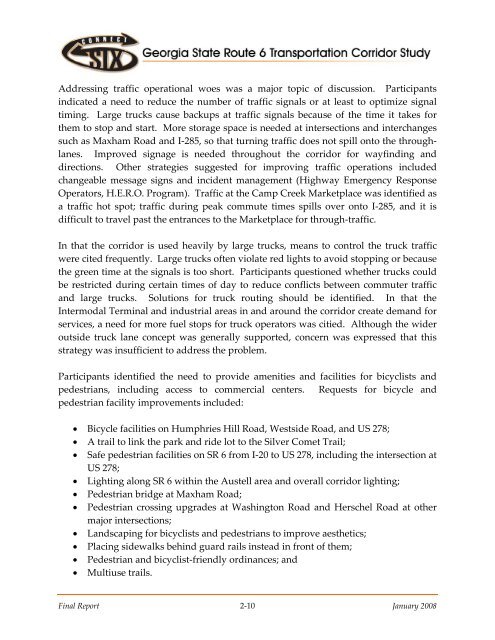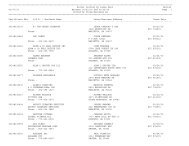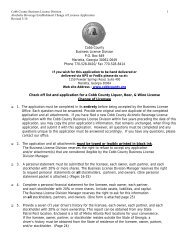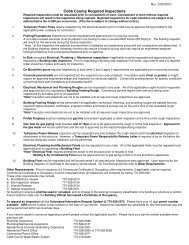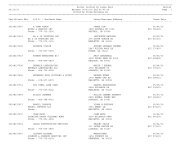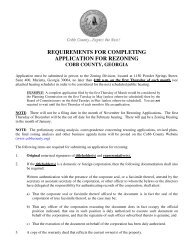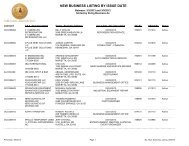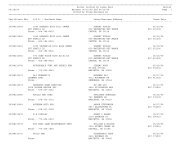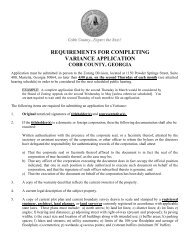State Route 6 Corridor Study Final Report - Cobb County Government
State Route 6 Corridor Study Final Report - Cobb County Government
State Route 6 Corridor Study Final Report - Cobb County Government
Create successful ePaper yourself
Turn your PDF publications into a flip-book with our unique Google optimized e-Paper software.
Addressing traffic operational woes was a major topic of discussion. Participants<br />
indicated a need to reduce the number of traffic signals or at least to optimize signal<br />
timing. Large trucks cause backups at traffic signals because of the time it takes for<br />
them to stop and start. More storage space is needed at intersections and interchanges<br />
such as Maxham Road and I‐285, so that turning traffic does not spill onto the through‐<br />
lanes. Improved signage is needed throughout the corridor for wayfinding and<br />
directions. Other strategies suggested for improving traffic operations included<br />
changeable message signs and incident management (Highway Emergency Response<br />
Operators, H.E.R.O. Program). Traffic at the Camp Creek Marketplace was identified as<br />
a traffic hot spot; traffic during peak commute times spills over onto I‐285, and it is<br />
difficult to travel past the entrances to the Marketplace for through‐traffic.<br />
In that the corridor is used heavily by large trucks, means to control the truck traffic<br />
were cited frequently. Large trucks often violate red lights to avoid stopping or because<br />
the green time at the signals is too short. Participants questioned whether trucks could<br />
be restricted during certain times of day to reduce conflicts between commuter traffic<br />
and large trucks. Solutions for truck routing should be identified. In that the<br />
Intermodal Terminal and industrial areas in and around the corridor create demand for<br />
services, a need for more fuel stops for truck operators was citied. Although the wider<br />
outside truck lane concept was generally supported, concern was expressed that this<br />
strategy was insufficient to address the problem.<br />
Participants identified the need to provide amenities and facilities for bicyclists and<br />
pedestrians, including access to commercial centers. Requests for bicycle and<br />
pedestrian facility improvements included:<br />
• Bicycle facilities on Humphries Hill Road, Westside Road, and US 278;<br />
• A trail to link the park and ride lot to the Silver Comet Trail;<br />
• Safe pedestrian facilities on SR 6 from I‐20 to US 278, including the intersection at<br />
US 278;<br />
• Lighting along SR 6 within the Austell area and overall corridor lighting;<br />
• Pedestrian bridge at Maxham Road;<br />
• Pedestrian crossing upgrades at Washington Road and Herschel Road at other<br />
major intersections;<br />
• Landscaping for bicyclists and pedestrians to improve aesthetics;<br />
• Placing sidewalks behind guard rails instead in front of them;<br />
• Pedestrian and bicyclist‐friendly ordinances; and<br />
• Multiuse trails.<br />
<strong>Final</strong> <strong>Report</strong> 2‐10<br />
January 2008


